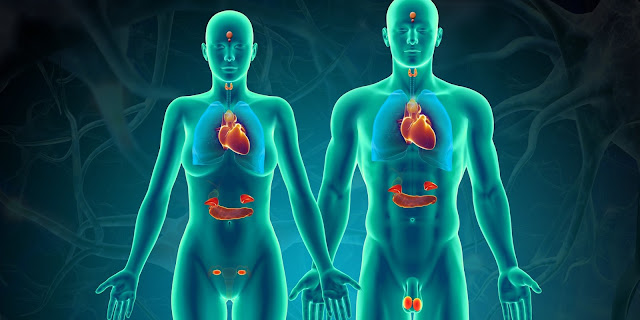The Future of Commercial Aircraft - An Industry on the Verge of Transformation
Advances in Aircraft Design
Commercial aircraft design and manufacturing has seen significant advancements in recent years. Planemakers are developing new aircraft with composite materials, more fuel-efficient engines, and aerodynamic design improvements. Both Airbus and Boeing are working on aircraft that feature over 50% composite materials which helps reduce weight. This improves fuel efficiency and enables longer flight ranges. Major aircraft components like wings and fuselage are being redesigned using composites. Advances in engine technologies are also reducing fuel burn substantially. New engine designs from GE Aviation and Pratt & Whitney are up to 20% more fuel-efficient than earlier models. Airlines are reducing operational costs through lower fuel costs which is a big factor in an airline's profitability.
Sustainable Aviation Fuels
Airlines and manufacturers are collaborating to develop and scale up the
production of sustainable alternative fuels for Commercial
Aircraft. Sustainable aviation fuels or SAF are derived from
sustainable feedstocks like used cooking oil, agricultural and forestry waste.
They have the potential to significantly reduce aviation's carbon footprint.
While SAF currently make up less than 0.1% of total jet fuel consumption due to
limited availability, there are efforts to boost production volumes. United
Airlines and jet fuel producer Neste recently announced a joint initiative to
increase SAF production capacity in the US and Europe to over 8 billion gallons
per year by 2030. This could potentially displace over 20 billion gallons of
fossil jet fuel annually by mid-decade. SAF are drop-in fuels that can be
directly utilized by existing aircraft and fueling infrastructure without any
modifications.
Aviation Electronics and Software
Airplanes are increasingly becoming more software-defined with new electronic
systems responsible for computerized functions. Boeing and Airbus are utilizing
advanced flight control software for safer and optimized flight operations.
Their latest narrowbody and widebody planes have fly-by-wire flight control
technology replacing older mechanical hydraulic systems. This enables features
like electronic trim and rudder controls. Fly-by-wire also reduces weight as it
requires fewer movable parts. Aircraft electronics are also upgrading
navigation, cabin management, and engine systems. Advanced integrated modular
avionics are allowing for more data sharing between different onboard systems.
Avionics upgrades are improving safety, lowering maintenance costs, and
enabling new technologies. For example, head-up displays that mirror critical
flight data onto a transparent surface near the pilot's eye-line are becoming
standard.
New Aircraft Programs
Both Airbus and Boeing are working on new airplane families to replace
best-selling planes like the A320 and 737 and target the growing single-aisle
market. Airbus' A320neo series, featuring new engines, is selling strongly with
over 6,000 orders so far. The company is developing the A320neo successor - the
A321XLR, with an even longer range of up to 4,700nm. Boeing's 737 MAX, which
returned to service after a lengthy grounding, competes with the A320neo.
Boeing is also developing the new 737 MAX 10 variant. Both companies have
launched clean-sheet designs for new mid-size narrowbody aircraft targeted at
220-250 seats - the Boeing 797 and Airbus A321XLR competitor. These
"middle of the market" aircraft will focus on operating efficiency
and profitability. Airbus and Boeing are also working on potential replacements
for their twin-aisle aircraft - the A330neo and 777X respectively, to modernize
their widebody fleets.
Changing Business Models
Changes in airline business models are influencing aircraft selection and
utilization. The low-cost carrier model continues to grow globally, driving
demand for single-aisle planes. Newer carriers often opt for all-Airbus or
all-Boeing fleets to simplify maintenance and logistics. The rise of urban air
mobility has led companies like Archer, Joby, and Lilium to develop electric
vertical take-off and landing aircraft seating 1-4 people. These eVTOL aircraft
could transform intra- and inter-city travel over short ranges. Corporates are
also placing huge orders for private jets, with over 7,000 business jets
projected to be delivered by 2030. With travel restarting, airlines face a shortage
of pilots which has led to wet-leasing of aircraft from other carriers to meet
demand. This represents a shift towards more flexible aircraft deployment
models.
In summary, commercial aircraft manufacturing is poised at an inflection point.
Advances in materials, propulsion, electronics, and operational technologies
are driving the development of new more efficient aircraft platforms tailored
to evolving airline business models. Sustainability is also a key focus through
alternative fuels and optimized designs. The introduction of these advanced
aircraft over the next decade will consolidate transformations underway in the
industry. The future of aviation and passenger travel looks very promising.
Get More Insights On Commercial
Aircraft




Comments
Post a Comment